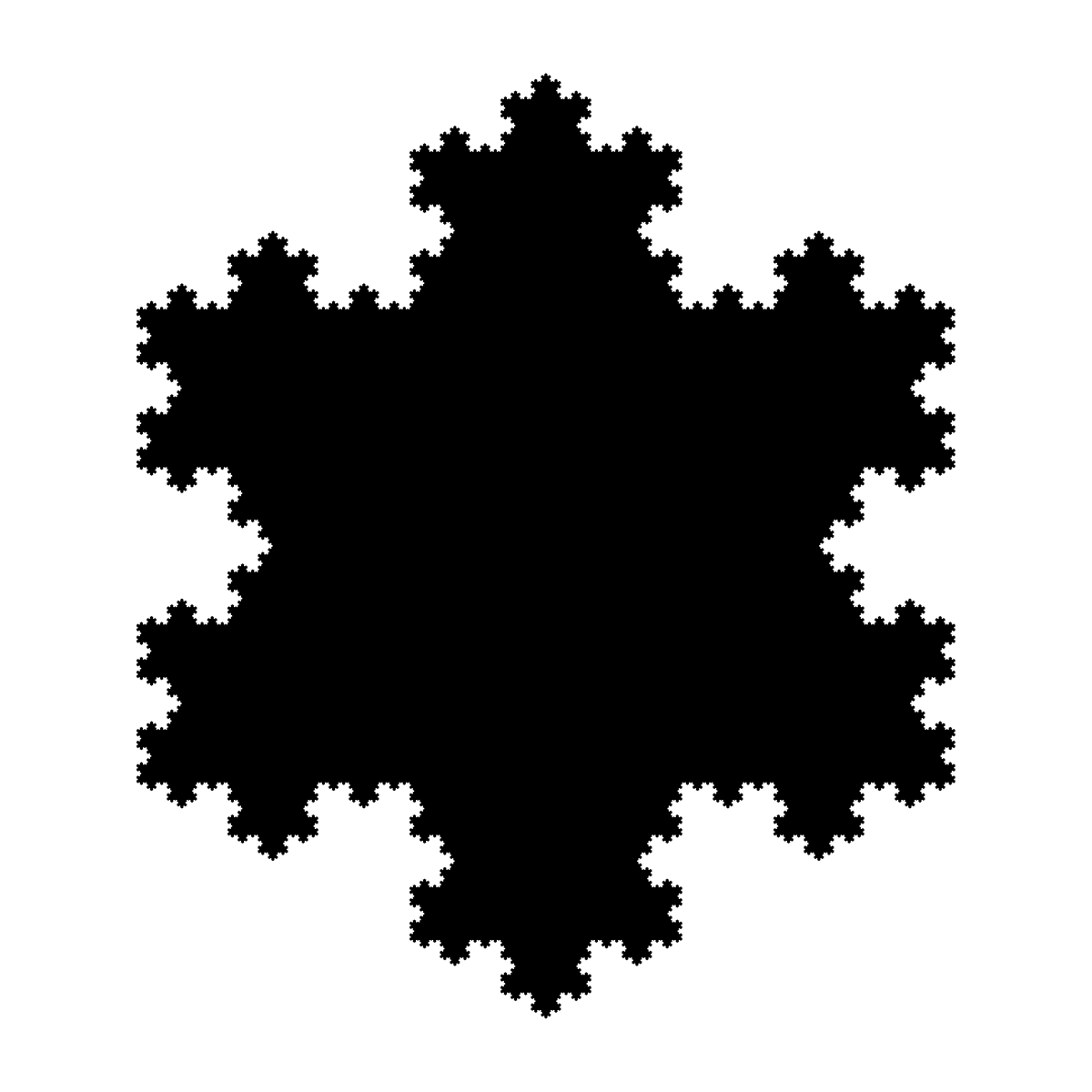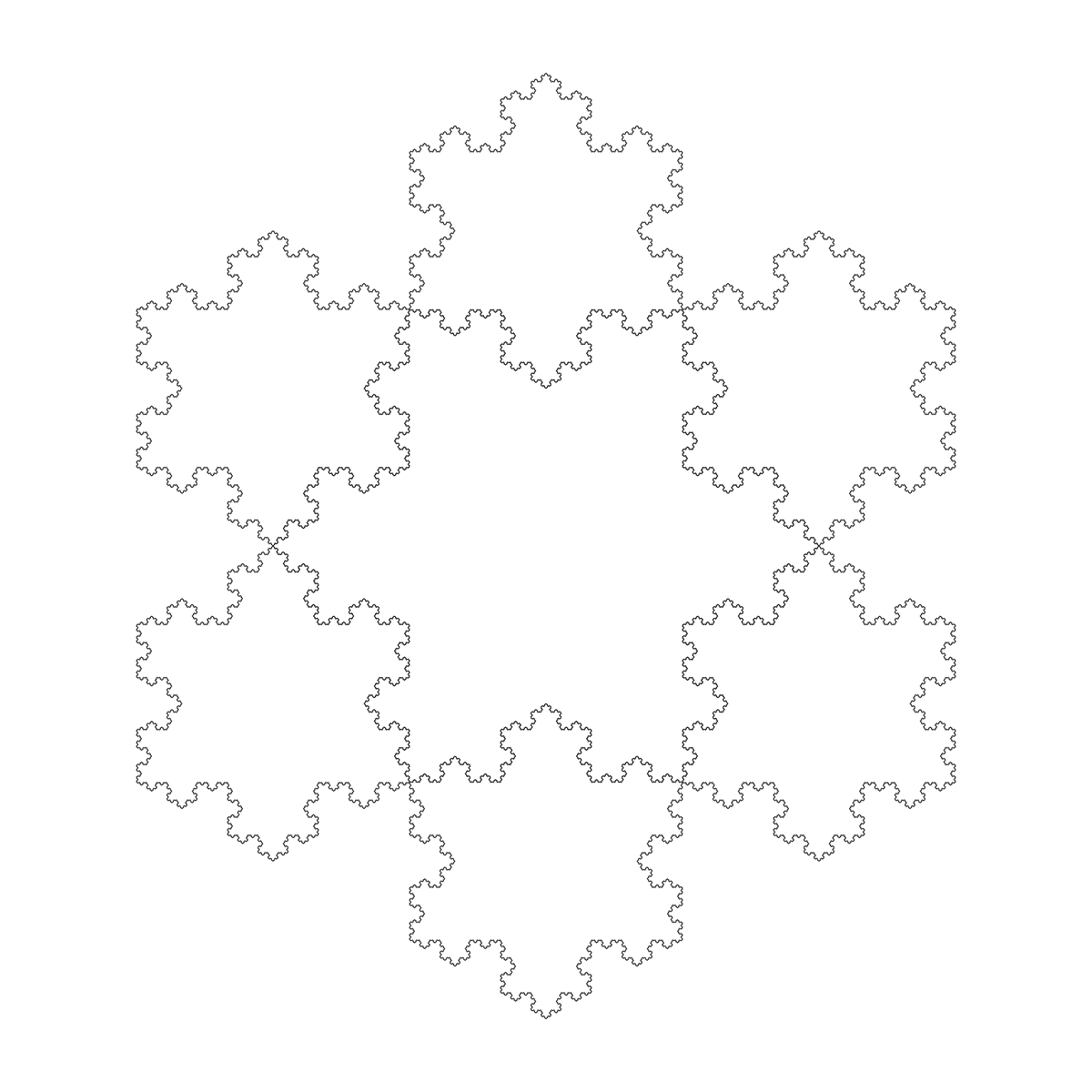Koch
The Koch curve is one of the earliest fractal described, appearing first in a 1904 paper by Helge von Koch.
It can be constructed iteratively, by splitting a segment in three equal parts, completing the middle part to an equilateral triangle and deleting its base. The Koch curve is obtained in the limit where the number of iterations goes to infinity.

Each iteration multiplies the number of sides of the Koch curve by 4, while their length is divided by 3, so the length of the curve increases by 4/3. This shows that the length of the Koch curve is infinite. The fractal dimension of a curve is the log ratio of its length increase by the scaling factor, so is in this case log 4/log 3 or about 1.26.
Three copies of a Koch curve can be assembled into a closed fractal curve known as the Koch snowflake.

Here is a picture displaying altogether 8 Koch snowflakes and making obvous some of the selfsimilarities of the Koch curve.

This image can actually be completed to a tiling of the plane by Koch snowflakes of two different sizes. (This is impossible with Koch snowflakes of a single size.)

The Koch snowflake also appears when piling triangular or hexagonal patterns with a scale factor of 3.





